Swinging into the American Dream: Latin America's WAR at Bat
By Jade Abrica | May 27, 2025
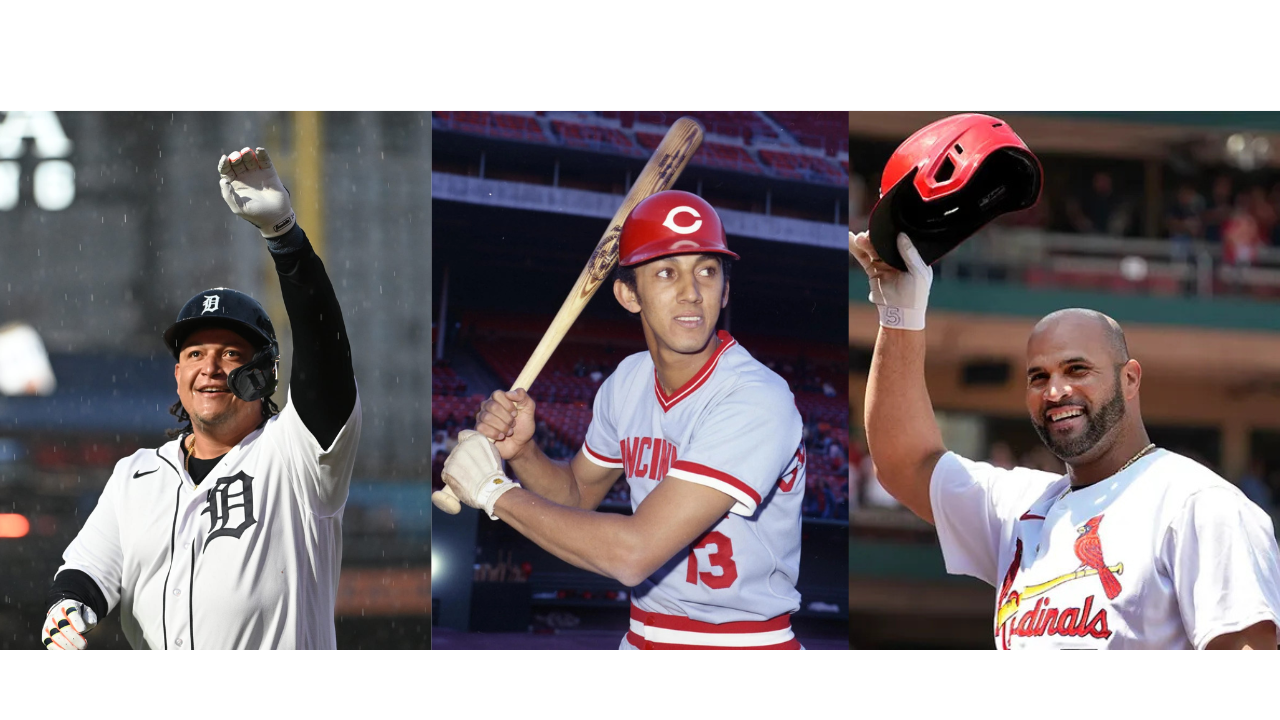
Baseball is a widely played sport with it being one of the top ten most popular sports in the world. The widespread popularity allows for MLB to find talented players from across the globe, with most international players coming from Latin America. When the sport was brought over to the Dominican Republic, Venezuela, and Colombia, in the late 19th to early 20th centuries, it became deeply entrenched in their society leading to very notable players, such as Vladimir Guerrero, Albert Pujols, Jose Altuve, and Édgar Rentería. On Opening Day 2024, the Dominican Republic, Venezuela, and Colombia respectively held the first, second, and eighth positions for countries of birth among MLB’s international players.
To preface, I chose to compare Colombia with the Dominican Republic and Venezuela instead of Cuba and Puerto Rico, who have different recruitment and player development pipelines. It was also interesting to see how a less dominant country compares to baseball powerhouses (#8 in comparison to #1 and #2).
After seeing these rankings, I began to wonder, out of these three countries, where MLB should continue to prioritize their scouting and farming. I decided to analyze and compare the Baseball Reference Wins Above Replacement (bWAR) of MLB hitters from these countries over time. I then averaged the countries’ total career WAR and total years played from 1960 to 2024.
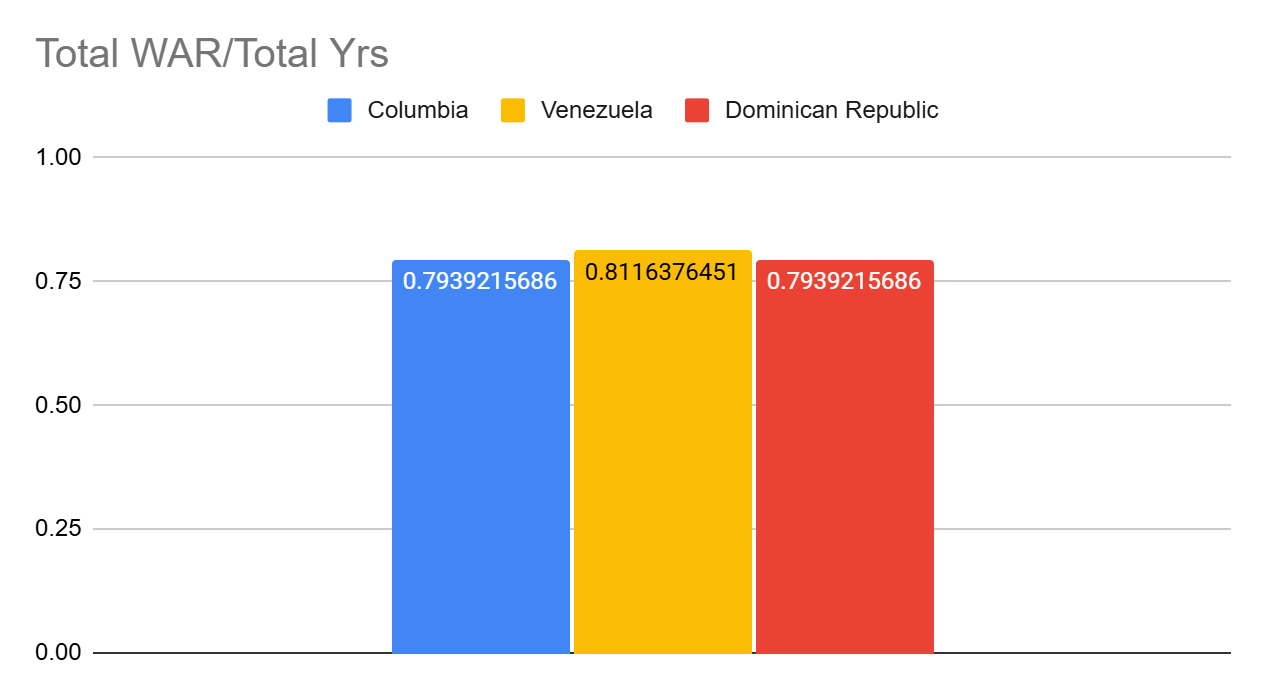
In doing so, I found that historically the three countries hadn’t differed much in their overall performance, with the values being near 0.8 WAR and Venezuela only leading by about 0.02 WAR.
To see if there was a change over time, I took a closer look at players’ WAR by decade. For this I focused on players whose career began in the 1970’s and the 2000’s. I took players’ career WAR and divided it by the number of years they played; then I averaged the total of average WAR and number of players in the decade.
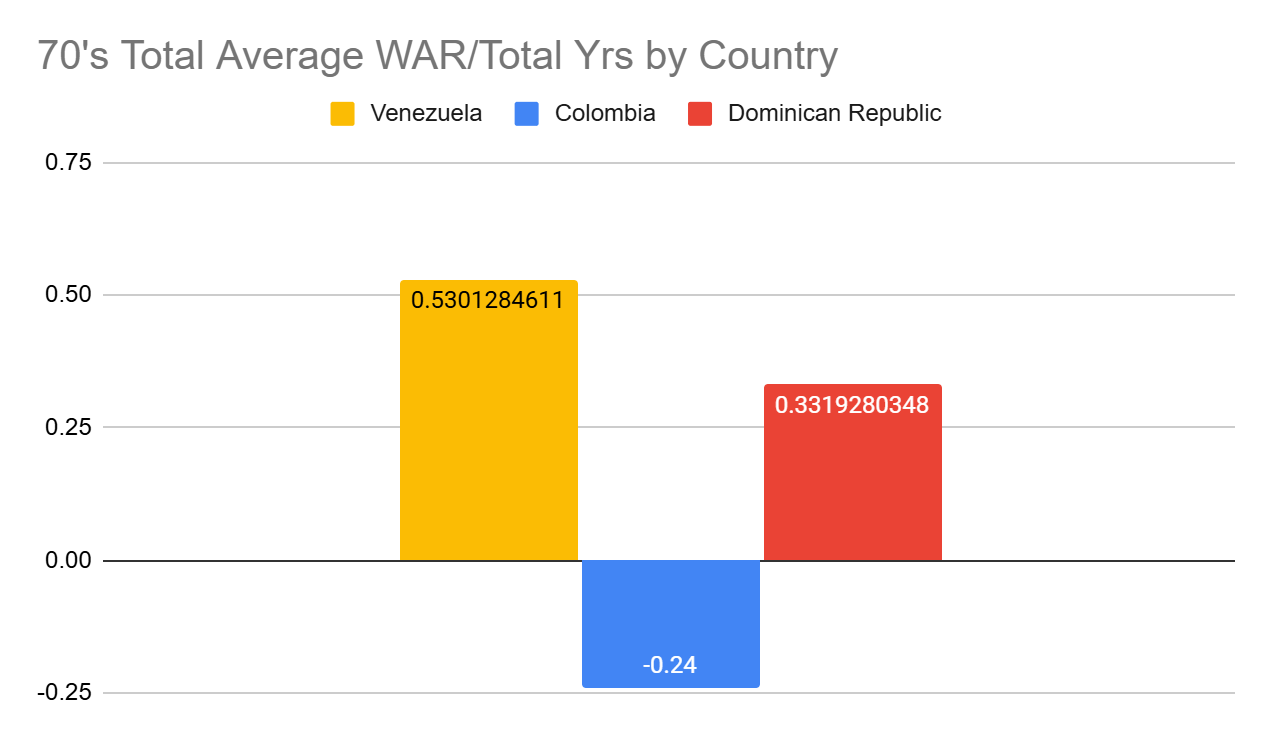
The 1970’s was the first decade that all three countries had hitters in MLB. However, there was still a relatively small number of players to analyze – Venezuela: 10; Colombia: 1; Dominican Republic: 33. As shown in the graph, Venezuela had the highest average WAR of 0.53 for players who began in the 70's, despite the smaller sample size. Dominican players also had a positive average for the decade while Colombia’s only player, Orlando Ramírez, had a negative career WAR average.
Venezuela and the Dominican Republic both had some notable players that contributed to a higher average. Dave Concepción from Venezuela played in MLB for 19 seasons with the Cincinnati Reds and averaged a WAR of 2.11 per season. In his career primarily as a shortstop he won two, back-to-back World Series with the Reds, five Gold Glove Awards, and two Silver Slugger awards; Concepción was inducted to the Cincinnati Reds’ Hall of Fame in 2000 and his number, 13, was retired by the Reds in 2007. Similarly, Dominican player César Cedeño averaged A WAR of 3.12 over 17 seasons, 12 of which were with the Houston Astros. Cedeño was most known for being the second player to hit 20 home runs and steal 50 bases in a season and achieving it three seasons in a row. César Cedeño is a five time Gold Glove Award winner and was inducted into the Astros Hall of Fame in 2020.
With the addition of notable players, I wanted to see these countries’ influence evolve in more recent MLB standings. For the 2000’s, I used the same procedure utilizing averaged career war and players.
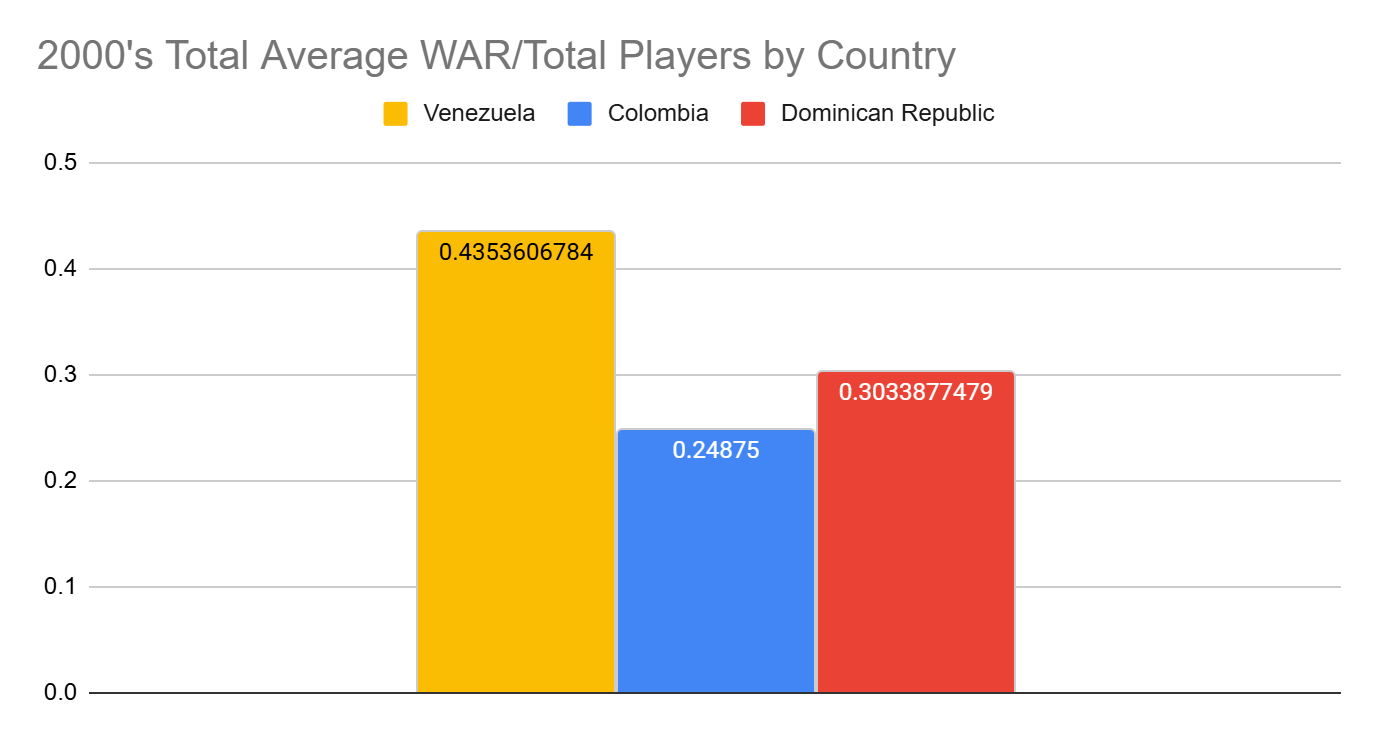
To analyze and compare career statistics with players who debuted in the 1970s, I examined players who debuted in the 2000s; looking at players who debuted after the 2000s increased the risk of analyzing players whose careers are ongoing. The sample size of Venezuela and the Dominican Republic increased significantly – Venezuela: 113; Dominican Republic: 165– while there was again only one Colombian player who debuted in this decade. Yet, Venezuela and the Dominican Republic kept a similar comparison and Colombia improved. The graphs above show how Venezuelan hitters have continued to be more valuable than Colombian and Dominican players on average – a 0.132 difference in average WAR is significant.
Again, there are a couple of outliers from Venezuela and the Dominican Republic – Miguel Cabrera and Albert Pujols. Venezuelan first baseman, Miguel Cabrera, played 21 seasons – five with the Florida Marlins and 16 with the Detroit Tigers – earning an average of 3.2 WAR per season. In his career, Cabrera became one of the few MLB players in history to reach the milestones of 500 home runs and 3,000 hits. Similarly, Albert Pujols had an outstanding MLB career. Playing 22 seasons, 11 with the St. Louis Cardinals, nine with the Los Angeles Angels, and one with the Los Angeles Dodgers. Pujols averaged a WAR of about 4.6 per season, is a two time World Series champion, and is one of the four members in the 3,000-hit and 700-home run club. Both are expected to be first ballot Hall of Famers when they become eligible.
It’s important to recognize the influence that Latin America has had on professional baseball in the U.S. As we’ve seen, some of the greatest players in MLB are Latin American. With that, I wanted to look at Latin American countries who have growing influence in MLB: Panama, Brazil, and Nicaragua. To preface, the noted countries have significantly less players historically and were ranked either the same or lower than Colombia for countries of which MLB’s international players come from as of Opening Day 2024 – Panama: 9th (five players); Brazil:15th (one player); Nicaragua: 18th (one player).
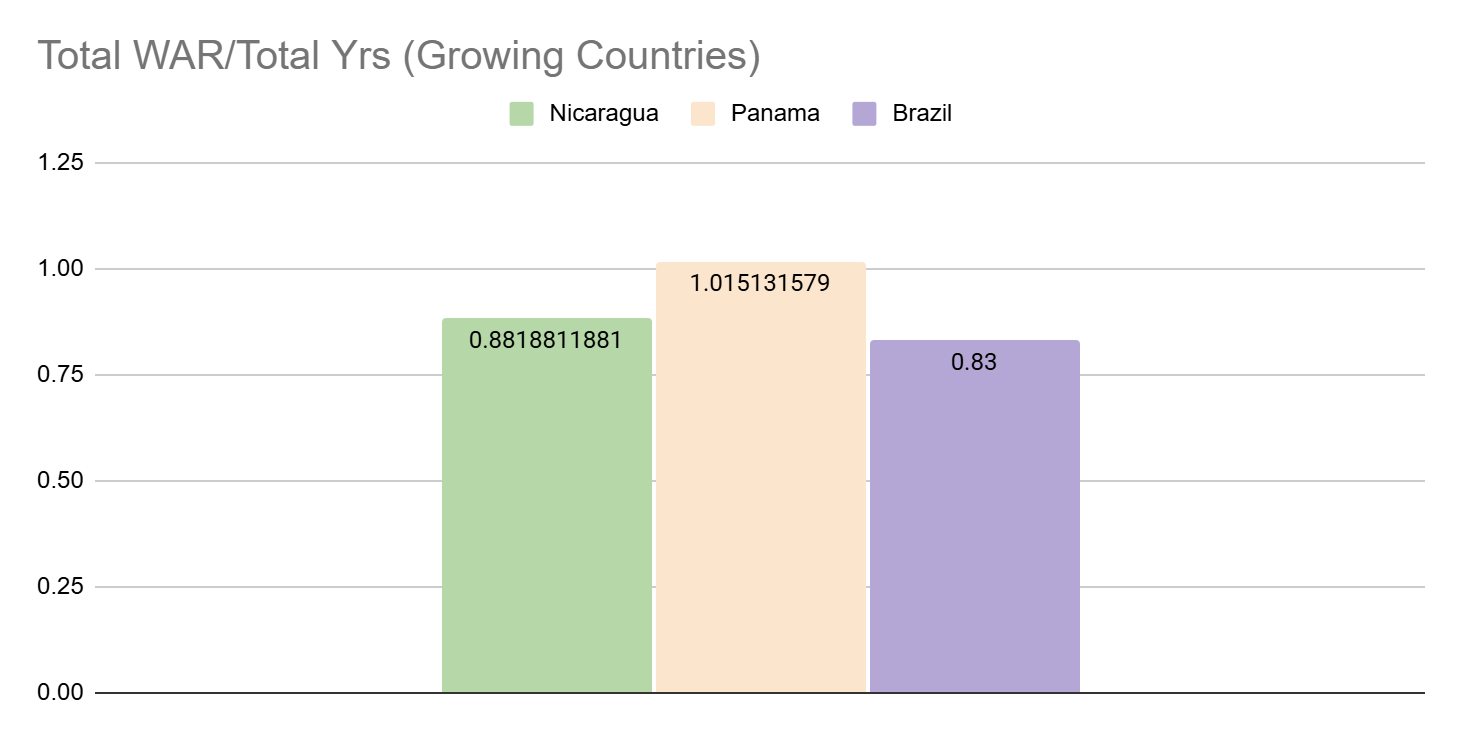
Using the same process as before, I averaged the countries’ total career WAR for all MLB players and divided it by the total number of seasons. The graph shows the comparison of the cumulative career WAR for the three countries and the original three I started with. While there are significantly fewer players, Panama and Nicaragua are very comparable to Colombia by amount of players.
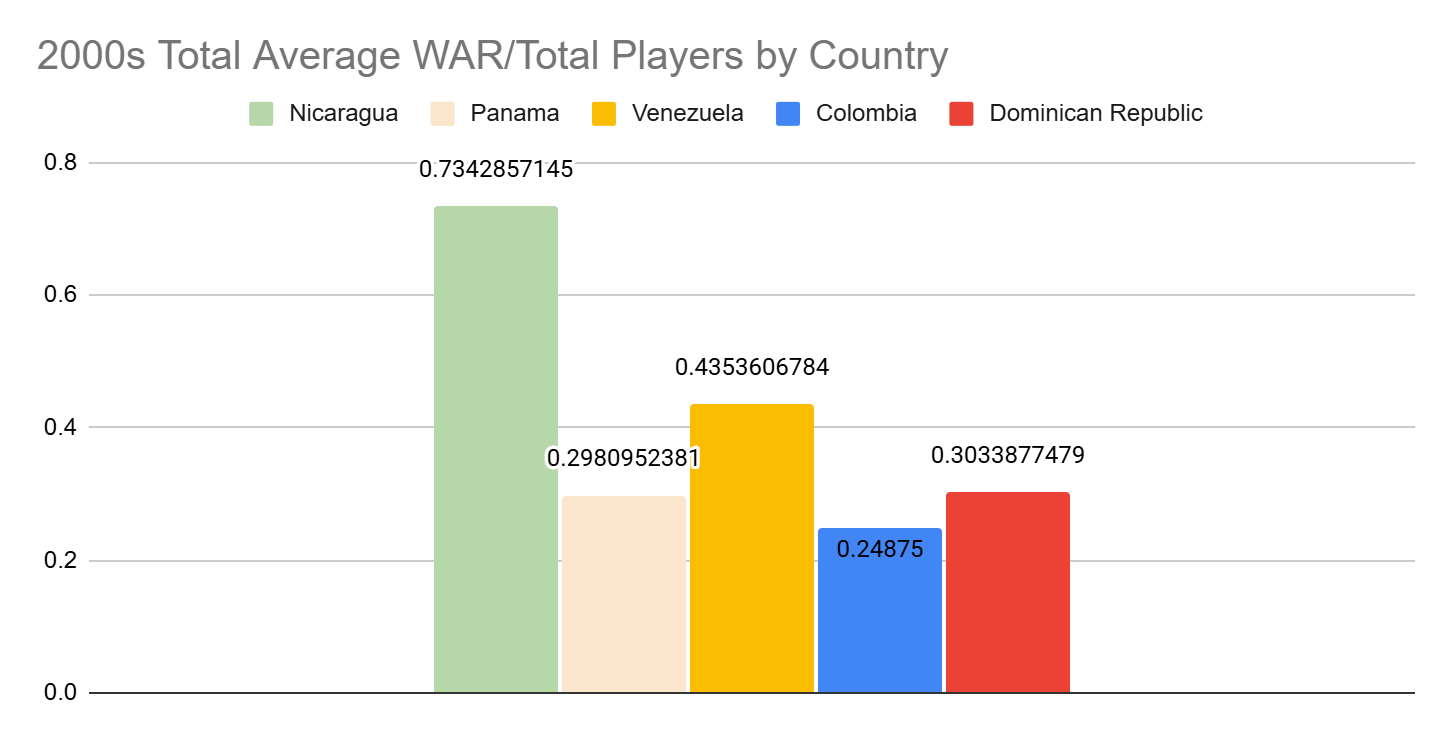
Nicaragua and Panama have significantly fewer players who debuted in the 2000s than Venezuela or the Dominican Republic, which makes their stats hard to compare (Nicaragua: 2; Panama: 7; Brazil: 0). However, it’s interesting to note how they compare to Colombia which had one player debut that decade. While Nicaragua had only two players, both on average were more impactful than any other country– this small sample size makes outliers more likely. While working with small sample sizes can be difficult and less informative, these results provide insight to some exciting up and coming countries in MLB.
Baseball is very significant to many cultures in Latin America, and so the Latin American impact on baseball, specifically MLB, also deserves much attention. Countries like Venezuela and the Dominican Republic are safe countries for organizations to grow their farming systems in, particularly Venezuela, because historically significant players have stemmed from them. However, other countries could also be sources of new baseball talent. While limited by small sample sizes, these analyses show that it could be promising to start scouting and programs in countries whose impact are growing; in other words, start to invest in countries like Colombia, Nicaragua, Panama, and Brazil.

